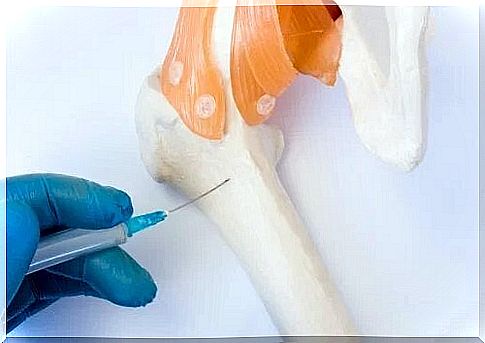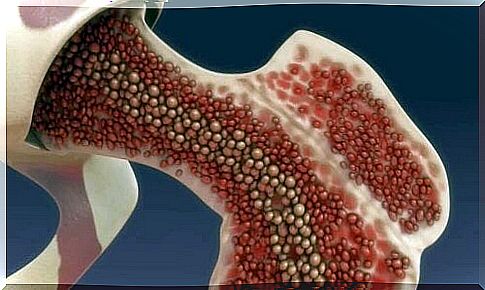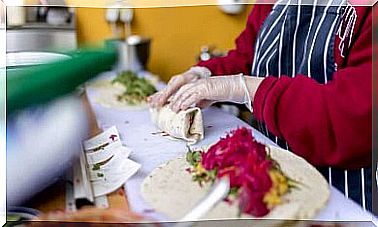Bone Marrow Donation: What Is It?
Many people around the world suffer from serious illnesses whose only solution is a bone marrow transplant. In this article, we’ll tell you how healthy people can help with bone marrow donation.

Bone marrow donation appears to be a humanitarian action that facilitates bone marrow transplantation. Healthy people can help patients with serious conditions leading to death.
The diseases that most commonly benefit from a bone marrow transplant, among others, are:
- Leukemia
- Aplastic anemia
- Lymphoma
- Myeloma
What is bone marrow?
Bone marrow is a tissue in the human body responsible for the production of blood cells and part of the immune system. So-called stem cells are found in the bone marrow. The most specific scientific name for these cells is “hematopoietic progenitors”. This is due to their ability to give birth to blood cells:
- Red blood cells or red blood cells
- White blood cells or leukocytes
- Platelets or thrombocytes
Diseases of the bone marrow are those in which the ability of the tissue to efficiently produce these cells is impaired. Either due to excessive, insufficient or abnormal production.
For many of these conditions, the solution lies in a bone marrow transplant. And this is where bone marrow donation plays an important role.
Bone marrow transplant
Essentially, a bone marrow transplant involves replacing diseased bone marrow tissue – found inside the bones – with healthy tissue. It is also known as a stem cell transplant because it is these cells that are mainly transplanted.
But it is not possible for all sick people to receive bone marrow tissue from just any donor. Compatibility is essential for success and to avoid more serious complications later. This is why we are talking about compatible and non-compatible donors.
The corresponding bone marrow donation is determined by human leukocyte antigen (HLA). HLA is a group of proteins in various cells, especially white blood cells. It is a recognition system that the human body uses to determine what belongs to it and what is foreign.
Each person has their own HLA system. This particular identity helps the immune system to defend the body from the outside which can make it sick. Of course, HLA alone will not be able to distinguish between a bacteria, for example, and bone marrow tissue from a donor.
If the HLA between two individuals is sufficiently similar, the bone marrow transplant will ultimately be accepted by the recipient. Otherwise, the recipient body will reject the external tissue. Much of the success of the operation lies in the degree of HLA compatibility between the donor and the recipient.

How does bone marrow donation work?
When a person decides to be a bone marrow donor, they will most likely experience a Peripheral Blood Stem Cell Collection (PCHSS).
First, five days before the actual donation, the donor will receive one injection per day as a granulocyte colony stimulating factor (G-CSF). The injection takes about five minutes to give and moves the stem cells from the bone marrow to the circulating blood.
After stimulation with the injectables is complete, the donated tissue should finally be removed. To do this, a needle is placed in each arm. One of the needles sucks the blood to flow through a machine that will collect the stem cells, while the blood returns to the body through the other needle.
The extraction takes about three hours in total and may need to be repeated the next day. Some minimal side effects may therefore occur in the donor, such as headaches and bone pain.
Less frequently, it may be necessary to remove tissue directly from the bone. This type of bone marrow donation is not the one that is regularly indicated. Professionals will decide whether one or the other is appropriate for each case. This technique is more complex and is considered surgery.
Donors undergoing direct bone marrow harvesting should rest for about a week after the procedure. The side effects are more intense and longer lasting.

Donation conditions
In general, to be a suitable donor, a series of requirements must be met:
- Age between eighteen and fifty-five.
- Then, weigh more than fifty kilos.
- Do not have a disease that can be transmitted to the recipient of the donation.
- Finally, you need to be healthy enough not to put your life at risk by donating.
The first step is to first sign the informed consent accepting the donation. Once signed, a blood sample will be taken from the potential donor to analyze the HLA and load this information into a database.
When the time comes, if an effective donation is needed because there is a compatible recipient, the donation will be done in a hemotherapy center.
However, each country and region has its own system for registering bone marrow donations. You can consult the health centers near you to learn more about the organization of the system in the area where you live.









